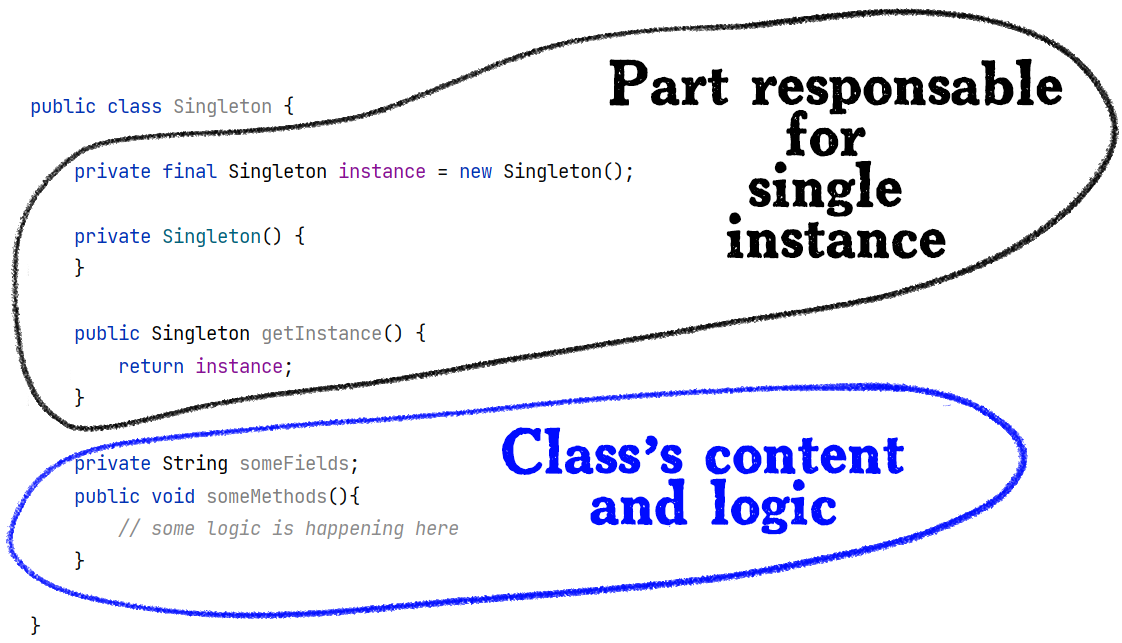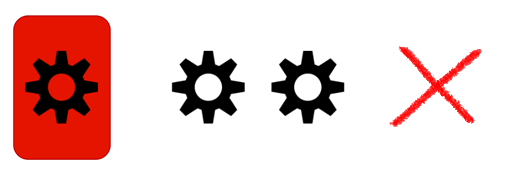Why Classical Singleton Is an Antipattern: How To Make It Great Again Using IOC
In this article, find out why the Classical Singleton pattern now is recognized as an antipattern and learn how to make it great again using IOC.
Join the DZone community and get the full member experience.
Join For FreeClassical Singleton Introduction
Classical Singleton is one of the most well-known structural patterns. It is widely used in production and is responsible for creating only one single instance. This pattern was mentioned in the GOF patterns book. How is it possible that it became an antipattern? Before we start, let's remember what a classical Singleton looks like.
Classical Singleton Implementation
Classical implementation of Singleton assumes that class contains two things:
- Class content and its logic
- Taking care about only its single instance
Let's take a look at the classical example below. Here you can see eager instance initialization (and it doesn't matter, actually). The private constructor doesn't allow you to create more than one instance. Singleton class is accessible via the getInstance method. All logic and fields related to the class's activity show that the class has its own activity.

Why Is Classical Implementation an Antipattern?
The provided example creates only one single copy of the Singleton class and can be accessed through the getInstance method. However, the most important part of this class is its logic that comes together with some fields and methods. What is particularly wrong with it? Let's appeal to SOLID principles and try to apply them:
Single Responsibility
Single responsibility means that class should serve only one purpose. In our case, this rule is violated because the implementation class also takes care of single initialization.

Open Close Principle
The Open Close Principle says that a class should be open for extension and closed for modification. This rule is also violated because we can't even extend this class due to private constructor:

Liskov Substitution
The Liskov substitution says that subclass B of class A should be able to be replaced by B without disrupting its design. Obviously, it's violated for the same reason: we can't create subclasses.

Interface Segregation
This principle says that interfaces shouldn't have methods that it doesn't use. Well, Singleton is class and not designed to have any interface wrapper, so this rule is not applicable here.

Dependency Inversion
The dependency injection rule says that entities must depend on abstractions, not implementations. The rule is violated because this version of Singleton is based on the concrete implementation.

All SOLID Rules Are Violated
Overall, such Singleton implementation violates all five rules. Therefore, that means that this such design brings many potential development and maintenance problems such as:
- Slow development and maintenance
- Very difficult testing
- Poor design
Personally, even I for a long time did not doubt in classical Singleton (but I definitely had issues with testing it). However, after analysis, we see that actually, the old good friend is a wolf in sheep's clothing.

Inversion of Control (IOC) Based Singleton: Good Alternative
Singleton implementation shown earlier is one of the possible options of creating single instances of a class. There is a better way to do it: use an IOC container. An IOC container takes care of classes and their instances. In the next example, we use a Spring IOC container that creates a Singleton class as a Singleton bean. Scope Singleton shown in the example below is unnecessary because any bean is Singleton by default.

There are two parts. Class Singleton itself should be moved outside and do its job somewhere else without knowing how it will be initialized, as a single instance or differently. Let's answer the same SOLID questions:
Single Responsibility
IOC makes the initialization part and class itself separately; therefore, the principle is followed.
Open Close Principle, Liskov Substitution, Interface Segregation
As long as the class is not coupled with an IOC container, you can write any class implementation. Therefore, principles can be followed if developers follow these rules.
Dependency Inversion
It depends on the IOC container. Spring allows flexibility and any bean defined in context can be an interface. Therefore, if developers make designs based on abstraction (e.g., interface) then the rule is followed.
Spring IOC Is Not Only an IOC Container
You might have an impression that Spring is the only IOC container. However, IOC is just a pattern and can be created on your own. You can also use alternatives like Google Guice which is pretty lightweight.
Instead of Conclusion
This topic might raise discussion, so any comments and ideas are welcomed.
Opinions expressed by DZone contributors are their own.

Comments